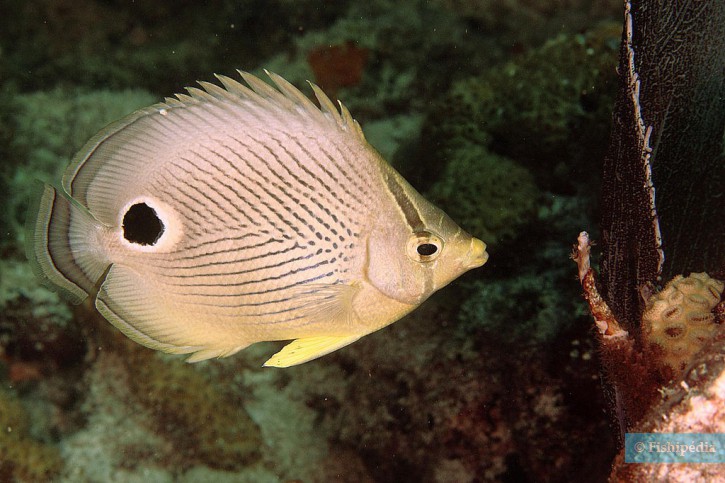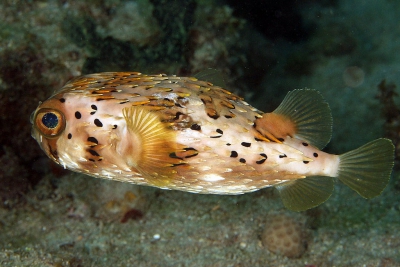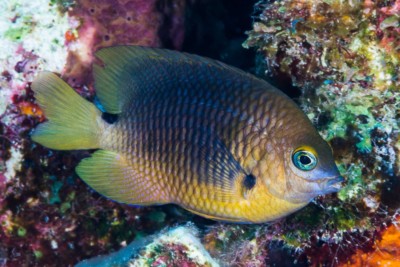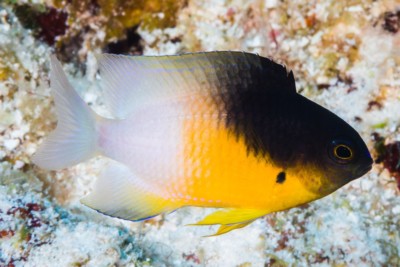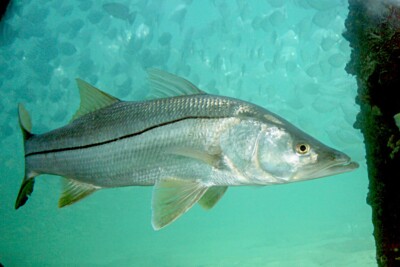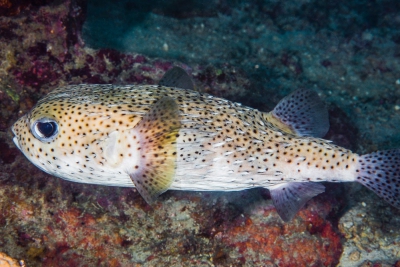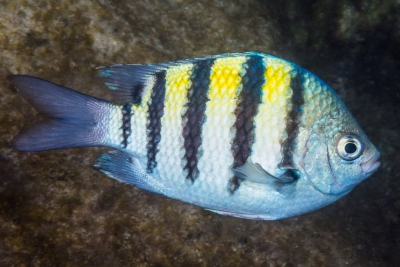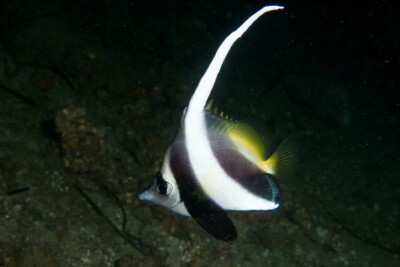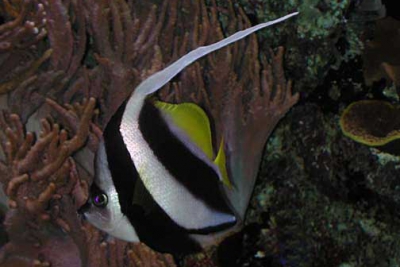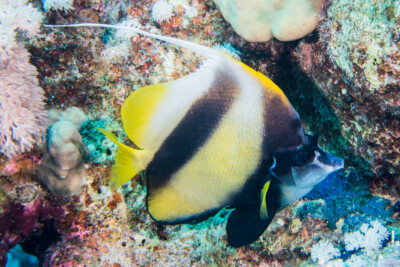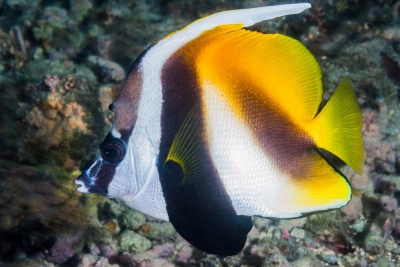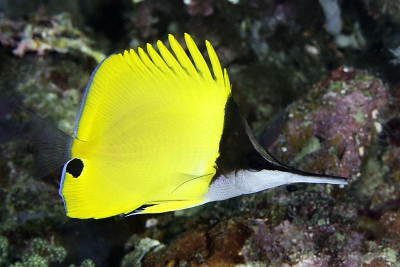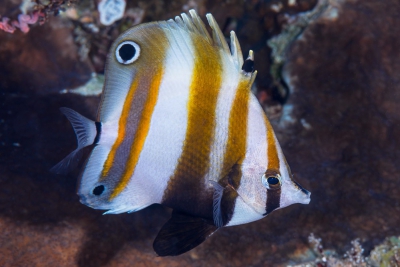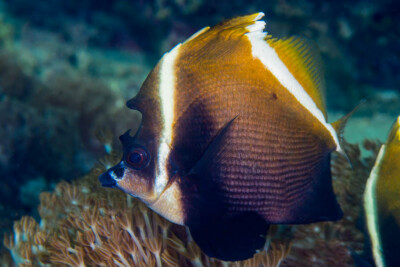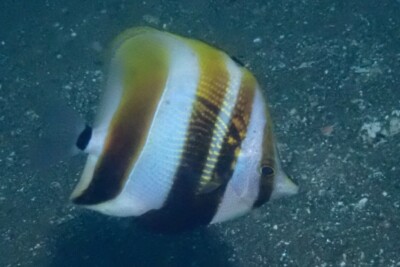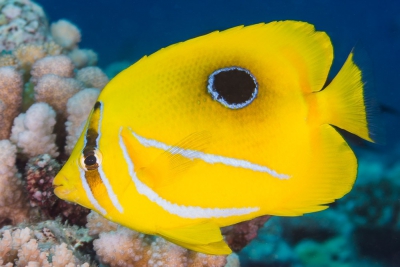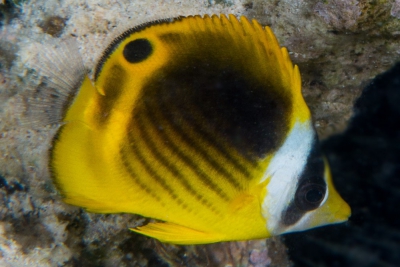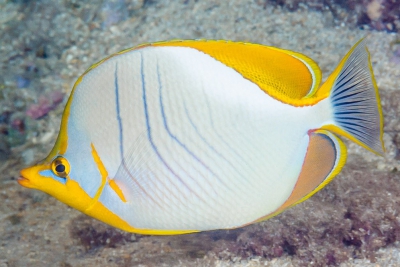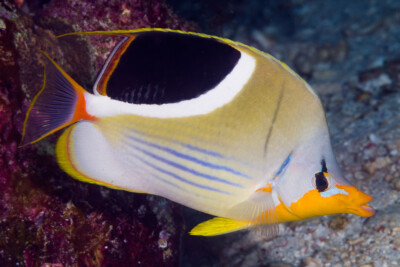foureye butterflyfish
| Family | Chaetodontidae |
|---|---|
| Genus | Chaetodon |
| IUCN category (World) | LC |
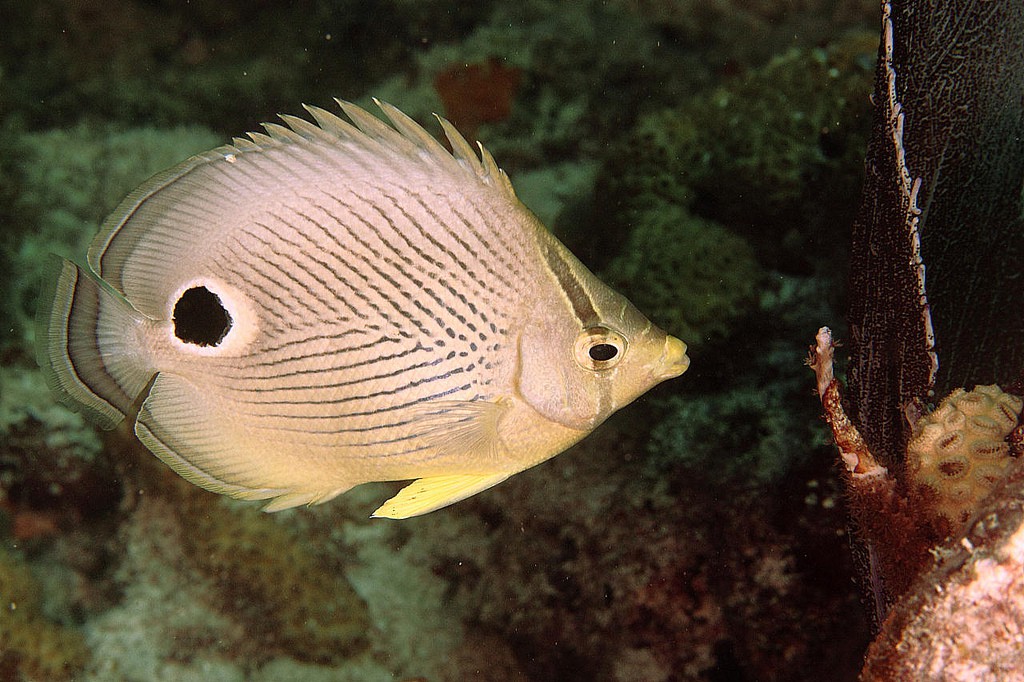

Introduction
The Foureye Butterflyfish is a fish native to the tropical Atlantic coasts of Central America and North America. It is also found in the Gulf of Mexico, the Caribbean Sea, the Antilles, Massachusetts, and up to the Bahamas.
Who is it?
Morphology
-
Average size13 cm
-
Maximum size15 cm
-
ShapeCircular
-
Patterndiagonal stripes
-
Average size13 cm
-
Maximum size15 cm
-
ShapeCircular
-
Patterndiagonal stripes
How to recognize This fish ?
The Foureye Butterflyfish is bicolor with a mostly silver and black pattern. It has yellow outlines and a black spot on the rear of the body. It is also covered with diagonal (in both directions) black stripes.
Sexual dimorphism
Dimorphism not specified.
Behaviour & Life cycle
-
dietomnivorous with carnivorous tendency
-
Sociabilityliving as a couple or alone
-
territorialNo
-
Way of livingdiurnal
The Foureye Butterflyfish is a fish seen in pairs or solitary that naturally resides near reefs. It is a species with a rather lively temperament that allows divers to approach it easily.
Generally, it is an independent fish that doesn't pay much attention to other species. However, it can show some signs of aggression towards its conspecifics.
Reproduction
-
Reproductionovipare qui pond en eau libre
The Foureye Butterflyfish is an oviparous fish that spawns in open water.
Harmless species
This species does not represent any particular threats to humans when encountered in its natural environment.
Origin and distribution
What is its habitat?
Natural environment characteristics
-
Temperature23 - 27 °C
-
Depth2 - 20 m
-
FlowMedium
Biotope presentation
The Foureye Butterflyfish is most commonly found at a depth of less than 20m. However, it is not impossible to find this fish at other depths.
The substrate is generally made up of rocks.
Species of the same biotope
To go further
Sources & Contributions
Participation & Validation
The Fishipedia team and specialist contributors are committed to providing high-quality content. However, although the information comes from scientific sources or testimonials from specialists, the cards may contain inaccuracies.

Benoit Chartrer

Patrick Chartrer
Translation
Translation done with the valuable contribution of our translators, who make this information available to a wider audience. We sincerely thank them for their commitment.
Scientific partners
Species of the same family
Same genus
Species of the same biotope
